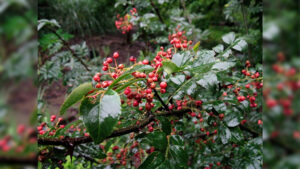Abstract/Description
Hindu Kush Himalaya (HKH) which constitutes headwater of South Asia experienced rapid changes in traditional resource use structure in response to population dynamics, rapid urbanization and growing tourism over past decades. This disrupted hydrological regime of Himalayan watersheds through reduced groundwater recharge and decreased water-generating capacity of land. As a result, natural springs which constitute main source of water for drinking, sanitation and irrigation depleted steadily. Moreover, climate change has stressed the Himalayan hydrological system through rising temperatures, altered precipitation patterns and increasing frequency of heavy rainfall events and droughts. Consequently, availability of water declined and Himalaya is emerging as a hotspot of looming water scarcity. These hydrological disruptions are not only increasing proportion of water, food and livelihood-insecure population in mountains, but also undermining sustainability of farming and food system in densely populated lowlands of South Asia. Study assessed impact of diminishing springs on water, food and livelihood security with case illustration of Kumaon Himalaya and its lowland in India, and employed field observations, monitoring, mapping and community-interactions methods to analyze various research parameters. Study observed 41% springs dried diminishing spring and stream discharge by 15% over past three decades. Consequently, the region turned into a water-scarce area with per capita water availability ranging between 500 and 1000 Meter3/Person/Year. This reduced availability of water for drinking and sanitation (11%) and decreased irrigation potential (15%). Consequently, agricultural productivity declined (25%) leading to 65% food deficit undermining food security of 75% population mainly consisting of the poor and other weaker segments of rural population. Furthermore, rural livelihood opportunities in traditional agricultural sectors declined by 24% restricting community access to food. Moreover, availability of water for domestic and irrigation decreased respectively by 7% and 11% decreasing food production by 21% in adjoining lowlands. It is therefore highly imperative to analyse environmental status of springs, and conceptualize and implement community-centric and participatory springshed management approaches for the replenishment and regeneration of springs for the socio-ecological sustainability of the highland-lowland ecosystem under climate change.


